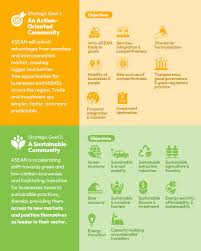The Role of ASEAN in Southeast Asia’s Future

Introduction
The Association of Southeast Asian Nations (ASEAN) plays a crucial role in promoting collaboration and peace in the Southeast Asian region. Established in 1967, ASEAN has grown to include ten member countries: Indonesia, Malaysia, the Philippines, Singapore, Thailand, Brunei, Vietnam, Laos, Myanmar, and Cambodia. In an increasingly interconnected world, the importance of ASEAN in facilitating economic integration, political stability, and cultural exchange is more relevant than ever.
Recent Developments within ASEAN
In recent years, ASEAN has focused on strengthening economic ties among its members. The ASEAN Economic Community (AEC) was established in 2015, aiming to create a single market and production base. In light of the global pandemic, member states have worked together to enhance health security and economic recovery strategies. The ASEAN Comprehensive Recovery Framework was adopted, addressing the challenges posed by COVID-19 and emphasizing sustainable and inclusive recovery for all nations.
ASEAN’s Global Influence
ASEAN countries have increasingly taken a prominent role on the international stage, engaging in dialogues on trade, security, and environmental issues. The recent ASEAN Summits have emphasized unity and mutual respect among member states while also addressing concerns regarding geopolitical tensions in the South China Sea and Myanmar’s political situation. ASEAN has established partnerships with global powers, including dialogues with the United States, China, and Japan, showcasing its strategic significance in global politics.
Future Prospects for ASEAN
Looking ahead, the future of ASEAN relies on its ability to navigate internal and external challenges effectively. Economic initiatives, such as enhancing digital trade and sustainable development, will be crucial to maintaining ASEAN’s relevance. Additionally, the need for comprehensive climate change strategies will further drive cooperation among member states. As ASEAN continues to evolve, it is expected to play a pivotal role in shaping not only the regional landscape but also contributing to global governance.
Conclusion
In summary, ASEAN stands as a significant organization that addresses the complexities of regional cooperation in Southeast Asia. With ongoing efforts to promote economic integration, political stability, and cultural understanding, ASEAN’s influence is likely to grow. For readers, understanding ASEAN’s role provides insight into the dynamics of one of the most diverse and rapidly evolving regions in the world, underscoring the importance of collaborative approaches in addressing shared challenges.









